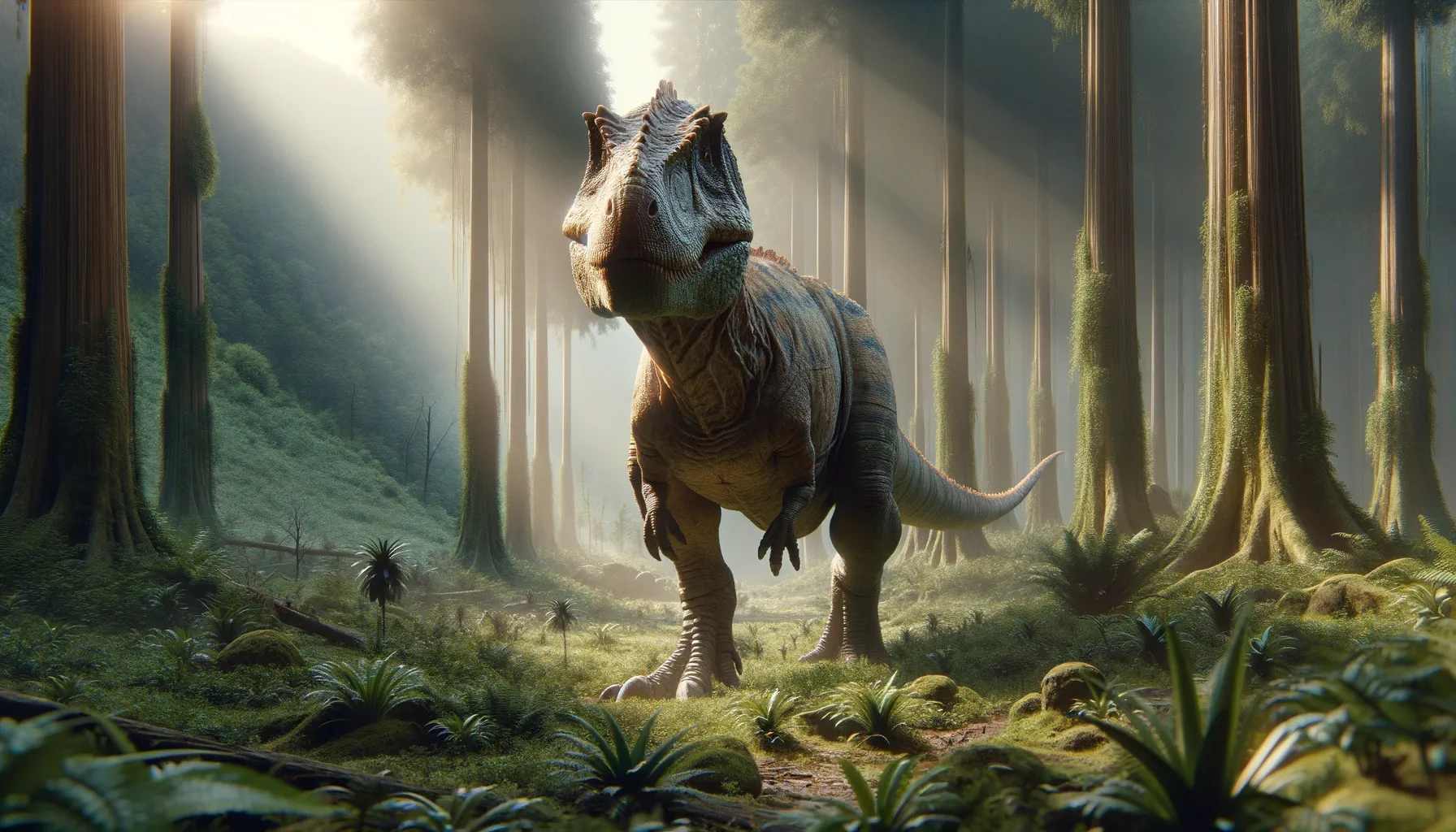
Yizhousaurus
A gentle giant of the Jurassic forests!
Period
Jurassic
Length
Estimated to be about 30 feet long.
Height
Approximately 12 feet at the shoulder.
Weight
Estimated to weigh around 2,500 to 3,000 kg.
Yizhousaurus was a Jurassic-period dinosaur, notable for its large size and herbivorous diet. Its fossils were uncovered in China, providing valuable insights into early sauropod evolution. This dinosaur played a vital role in the ecosystem as a plant-eater, influencing vegetation patterns. Paleontologists study its fossils to understand sauropod anatomy and their environmental adaptations, reflecting how such giants thrived millions of years ago.
Diet
Yizhousaurus was a herbivore, feeding primarily on plants. It consumed a variety of vegetation, including ferns, conifers, and cycads. Its large size helped it reach high branches.
Hunting
As an herbivore, Yizhousaurus did not actively hunt. It grazed and browsed for its food, likely moving slowly through its environment.
Environmental challenges
Yizhousaurus faced environmental challenges such as changing climates and the availability of food sources. Periodic droughts or floods could impact its ability to find sufficient food. Competition with other herbivorous dinosaurs for vegetation may also have been a significant challenge. Adaptations in diet and behavior would have been necessary to cope with these environmental pressures.
Speed
Yizhousaurus likely moved at a slow to moderate pace.
Lifespan
Estimated to have lived for 20 to 30 years.
First discovery
Discovered in the Yunnan Province of China in 2012.
Fun Facts
- Yizhousaurus lived around 200 million years ago during the Early Jurassic period.
- It was a plant-eating dinosaur identified from fossils found in China.
- Yizhousaurus is one of the earliest known members of the sauropodomorph group, which includes the giant long-necked dinosaurs.
- Its name means 'Yizhou lizard,' named after the place where its fossils were discovered.
- This dinosaur had a long neck, which helped it reach plants on trees and shrubs.
- Unlike some of its massive descendants, Yizhousaurus was relatively small, with estimates suggesting it was about 30 feet long.
Growth and Development
Yizhousaurus would have hatched from eggs and experienced rapid growth in its early years. As it grew, it would have required increasing amounts of food to sustain itself. Its long neck and sturdy legs were adaptations for reaching and processing diverse plant materials. The development of powerful muscles supported its massive body and allowed for efficient food processing.
Habitat
Yizhousaurus inhabited lush, forested environments with abundant plant life. Its habitat was characterized by warm climates and diverse ecosystems. The availability of water sources, such as rivers and lakes, was crucial for its survival. This environment provided both food and shelter from predators, supporting its long-term survival.
Interaction with other species
Yizhousaurus would have interacted with other dinosaur species, both herbivores, and carnivores. It likely formed herds or small groups for social interaction and protection. Coexistence with other species involved competition for food resources, influencing its feeding patterns. Predator-prey dynamics also shaped its behavioral adaptations.
Natural lifespan
Yizhousaurus could live naturally for several decades.
Reproduction
Yizhousaurus would have laid eggs in nesting grounds. Parental care may have involved guarding the eggs until they hatched. The young would have been vulnerable to predators and required protection. Reproduction strategies ensured the continuation of its lineage.
Social behaviour
Yizhousaurus may have exhibited social behavior such as group living for mutual protection. Such social structures could aid in finding food and defending against predators. Communication among individuals likely involved vocalizations or body language. Herding behavior would have been beneficial in maintaining group cohesion.
Fossil locations
Fossils of Yizhousaurus have been primarily found in Yunnan Province, China. These discoveries provide insight into the geographical distribution of sauropods during the Early Jurassic. The fossils include well-preserved bones, contributing to understanding its anatomy. These sites continue to be important for paleontological studies and reconstructions.
